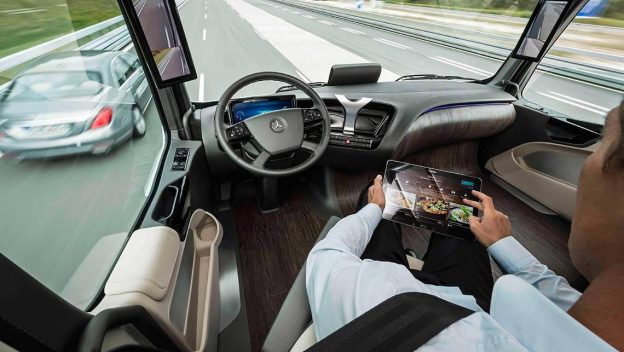Impact of New Generation Robots
I was stunned when I first met the collaborative Robot Sawyer at the Imagine 2030 Supply Chain Insights Summit in September this year. All I could think was how many jobs will these guys take. The list of features is awesome but for me the three pivotal features were
- Sawyer doesn’t need to be programmed to do a task, you show it.
- Sawyer can safely operate alongside human workers, without light curtains or guard rails
- I was expecting Sawyer to cost $300K. I was shocked to find that he starts at $29K
Together with Sawyer’s big brother Baxter, these bad boys are set to make a real difference in production, giving manufacturing companies a very competitive advantage.
Tractica anticipates the global robotics industry is expected to surpass US 151 billion by 2020, annual robot unit shipments will increase from 8.8 million in 2015 to 61.4 million by 2020, with more than half the volume in that year coming from consumer robots.
In 1961, General Motors unveiled Unimate, a robot that was designed to ease the production process; this was a 4000-pound robot and harbingered the use of robotics in manufacturing (Pugh, 2013). However, technological advancements and evolution of artificial intelligence and its use in embedded systems have enabled organizations to adopt and use robots in various stages of the manufacturing process (Sachs, Benzell, & LaGarda, 2015). Robots are now faster, cheaper, and moreintelligent because of the amalgamation of nanotechnology and artificial intelligence.
In its report, PricewaterhouseCoopers observed that in the last decade or so, the orders for robots globally has increased by more than 200 percent, with one of the key markets being the United States and Canada. The report also indicates that the number of registered patents for robotics related patents grew past the 5000 mark in 2013 from 1000 patents in 2001. This trend demonstrates an increased uptake and use of robots in the manufacturing process. Consequently, it is important to establish the effect that this increased focus on the use of robotics in the manufacturing process has had in the industry.
With the emergence of more intelligent and cheaper robots, manufacturers have diversified their application of robots in the manufacturing process. Whereas in the past robots were limited to the most basic and menial tasks, the new robots are being increasingly used in more specialized manufacturing processes (Pugh, 2013). The amalgamation of nanotechnology, robotics, and artificial intelligence has seen the application of robots in tasks that require precision which in some instances even a human being cannot handle. For example, Carlsson (2012) observed that robots are increasingly being used in pharmaceuticals and biomedical technological manufacturing firms, where the manufacturing process requires precision and the automation of the processes has enabled firms in the industry to achieve the same. In addition, the emergence of more intelligent and dexterous robots has fostered human-robots collaboration in the manufacturing process, where robots and human being work together in the production process; robots are now socially sensitive, have near human capabilities, and can, therefore, interact with human beings (Baily, Manyika, & Gupta, 2013).
Further, the emergence of the new generation robots has resulted in cost savings in the manufacturing sector. The new generation robots are cheap to maintain and will work shifts that would have normally been handled by multiple employees, resulting in the cost of labor savings. In addition, whereas human beings are likely to miss work because of various reasons, there is no likelihood of absenteeism where robots are concerned, unless when undergoing maintenance (Pugh, 2013). Other proponents of automation or uses of robots argue that coupled with their low maintenance cost, robots present an opportunity to manage costs of doing business for manufacturers who otherwise, would have had to incur expenses such as health insurance cover, salaries and remuneration, and other personnel related costs (Carlsson, 2012).
On the other hand, robotics presents an opportunity for further growth of a previously declining manufacturing sector. Baily et al. (2013) observed that the current resurgence of the United States manufacturing sector is attributable to technological advancements such as the developments in robotics. The primary reason as to why companies outsourced manufacturing jobs to other parts of the World such as China was that labor was cheaper in those countries. Yet China is investing heavily in robotics firms around the world, while also developing and manufacturing its own robots in a government-backed, robot-driven industrial revolution. Chinese companies are going through enormous efforts and invest large amounts of capital to automate their production and shed the dependence on “cheap labor,” which is getting increasingly expensive and uncompetitive with other “cheap labor” economies. (Wolf Richter, 2016).
The sharp falls in the price of industrial robots and a steady increase in their capabilities each year, robotic automation is equalizing manufacture costs anywhere in the world against the cost of human labor. With the calling for bringing back the jobs, this could pretty much be the key. Robotic automation can, however, give the necessary leverage to high-cost countries to bring back their outsourced manufacturing. Thoughtful and clever implementation will be needed, and the timing is crucially important, and the time is …… NOW!
So what are your thoughts on robotic automation and bringing the jobs back? Any comments gladly appreciated.
Tim Gray
~
References
Baily, M. N., Manyika, J., & Gupta, S. (2013). US productivity growth: An optimistic perspective. International Productivity Monitor, (25), 3.
Carlsson, B. (Ed.). (2012). Technological systems and economic performance: the case of factory automation (Vol. 5). Springer Science & Business Media.
PricewaterhouseCoopers. (2014, September 9). The rise of robots. Retrieved November 17, 2016, from http://www.pwc.com/us/en/industrial-products/next-manufacturing/robotics-rise-of-robots.html
Pugh, A. (Ed.). (2013). Robot vision. Springer Science & Business Media.
Sachs, J. D., Benzell, S. G., & LaGarda, G. (2015). Robots: Curse or blessing? A basic framework (No. w21091). National Bureau of Economic Research.
Wolf Richter (2016) Why China’s Multi-Decade Manufacturing Miracle is Over
I was stunned when I first met the collaborative Robot Sawyer at the Imagine 2030 Supply Chain Insights Summit in September this year. All I could think was how many jobs will these guys take. The list of features is awesome but for me the three pivotal features were Sawyer […]
Read More...










